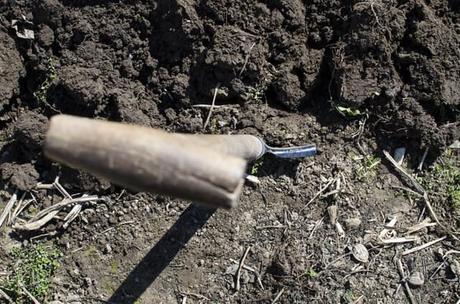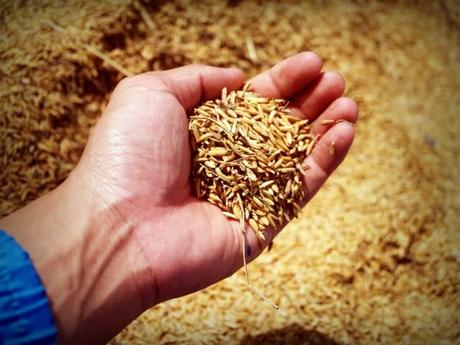What is Crop Rotation?
Crop rotation is an ancient farming practice that has been used by farmers since the BC Centuries. Crop rotation is defined as the intentional planting of different types of crops in different parts of the field and at different seasons in a sequential manner. It also entails not choosing to plant anything at all in a given season and allow the land to rejuvenate while bare until the next season. In crop rotation, one can also incorporate livestock in the practice when the land is left bare for a season of grazing.
In the very early years, farmers used to practice crop rotation but they had no idea of the scientific reasons behind the success of the practice nor did they have the specific term for the practice. This means they did not even know its impact in the environment. Typically, they did it because of the seasonal calendar of planting of crops, which was set traditionally as a planting pattern. Here are some of the known advantages and disadvantages of crop rotation.

Advantages of Crop Rotation
1. Increases soil fertility
Prolonged planting of the same crop type leads to depletion of specific nutrients in the soil. Each crop type has a different nutrient interaction with the soil, they each release and absorb different types of nutrients. Because of this, crop rotation increases soil fertility by controlling deficient or excess nutrients because it replenishes nutrients that are not available or absorbing nutrients that are in abundance.
It also increases the soil organic matter caused by the micro-organisms left behind by each type of crop planted. Animals that also graze on land left to fallow contribute to adding manure to the ground that fertilizes the soil. Biomass left behind when harvesting also improves the fertility of the soil as it is purely green manure.
2. Increases crop yield
Crop rotation increases the harvest obtained from a single seasonal harvest. Not only does one get a variety of crops after each season because of the incorporation of different crop types, but also a generally bounty harvest. The availability of nutrients from the soil provide abundant nourishment to all plants, therefore, ensuring success in the yield produced.
Most farmers are advised to practice crop rotation when the land becomes still and does not produce as much as it should further demonstrating the advantage of crop rotation. Notably, the practice has been seen to be successful in increasing the fertility of the land over a period of time.
3. Increase in soil nutrients
As earlier stated, crop rotation allows the land to regenerate and rejuvenate its self-nutrients without having to apply more nutrients through the use of fertilizers. Leaving the land bare for a season allows the land to regenerate the soil nutrients lost through absorption by plants harvested in the previous season.
By planting crops like legumes, for example, one is able to increase nitrogen in the soil as they contain nitrogen fixing bacteria that fixes nitrogen naturally into the soil. Each crop type adds up or absorbs different soil nutrients to the soil, therefore, it needs a mix up of a variety of plants to make them more balanced. Knowing the type of plants to grow after a rotation is imperative to avoid either excessive buildup of nutrients or excessive absorption of nutrients from the soil.
4. Reduces soil erosion
Soil erosion is the carrying away of the most important top soil layer by wind or water. When the soil is constantly covered by plants, the top soil layer is not carried away by water during heavy rainfall. A layer of crawling plants or cover crops like beans and peas works well to prevent erosion by giving the ground full crop cover unlike standalone crops like maize that leave land exposed to the soil erosion elements.
Crop rotation also helps reduce rain drop impact to the soil and general erosion by water because the roots of the plants hold the top layer soil together. Trees planted together with crops in the farms also assists in preventing soil erosion.
5. Limits concentration of pests and diseases
Similar plants tend to have the same pathogens, therefore, crop rotation intercepts the pest life cycle and their habitat. A cycle entails similar events that happen in constant rotation, meaning that the infestation of pests and diseases happens in season.
As a farmer, when aware of the kinds of pests and diseases that break out at a given time of the year and the crops affected, you can plant the host plant at a different season when the chances of infestation are low. This lowers the risk of plants getting infested and equally allows the farmer to grow crops each season without using pesticides, which is good for the environment.
6. Reduces the stress of weeds
Crop rotation is a traditional weed control technique that involves maintaining field conditions such that weeds are less likely to grow and/or increase in number. In other words, crop rotation allows the crops to crowd out weeds during competition of nutrients and other resources.
Weeds are a constant nuisance to any farmer and control can be done through tillage or mowing. They are a major enemy to crops as they bring competition of nutrients. Crop rotation thus reduce the population of weed or better yet, denies them an opportunity to grow. This in the long-run allows the farmer not to use tillage on the ground as it is a harmful technique of weed management to the soil structure.

7. Improves the soil structure
Crop rotation helps prevent soil compaction thus improving the physical condition of the soil. This allows for good condition for seed germination and root proliferation. It also helps with other soil processes such as water infiltration and aeration, which have a lot of benefits to the crops and improves the composition of the soil.
However, it all depends on the type of crops being rotated such as cover crops that reduce the spread of weeds thereby reducing tillage that damages the soil structure. An important element in the soil structure are the pores. With large pores in the soil, water easily drains while small pores in the soil do not allow for proper air and water circulation. Crop rotation generally helps to improve the soil structure.
8. Reduces pollution
The constant application of fertilizers to soils causes soil leaching, which is the excessive buildup of nutrients in the soil to a toxic and harmful level that do not allow plants to grow well. Crop rotation increases the nutrients in the soil, thus allows the farmer to plant crops successfully without the need of applying fertilizers.
Crop rotation also reduces the constant infestation of crops by pests and diseases, stopping the need of spraying the crops with pesticides. Although pesticides work very well on crops, they contain dangerous chemicals that can build up in the soil to harmful levels. The chemicals may also find their way in water ways when the rain water washes them off from the farms and the buildup results in the rise in levels of toxicity in the water.
Disadvantages of Crop Rotation
1. It involves risk
In crop rotation, investing in a season involves input of much money to buy different seedlings of the different types of crops to be planted. The success, however, for each crop type is not guaranteed and one can end up incurring a loss of harvest.
Pests and diseases from other crops can spread and infect more crops. There is also the risk of a certain crop yield not being successful and that was the only crop type grown meaning there will be no yields for that planting season and the farmer will have to wait for the next season.
2. Improper implementation can cause much more harm than good
Improper implementation of this technique causes much more harm than good. If one lacks the technical knowhow of crop rotation, there is no need to experiment because there can be nutrient build up that will take a longer time to correct. One has to have the skills to know what crops can be planted after the other and in which season for the process to be successful.
Improper implementation, hence, incurs the farmer very great losses. Still, information about the different planting techniques are easily available and the farmer should be vigilant as well as ready to practice them as required.
3. Obligatory crop diversification
For crop rotation to work, one has to plant different crops every time. Nonetheless, it does not allow a farmer to specialize on a single type of crop. The farmer is not able to produce a single crop on a large scale over a long period of time because of the damage it will do to the soil.
Practice of crop rotation is necessary to improve yields. Crop diversification also requires investment in different planting techniques for each unique crop that costs time and money because each crop needs a different type of attention.

